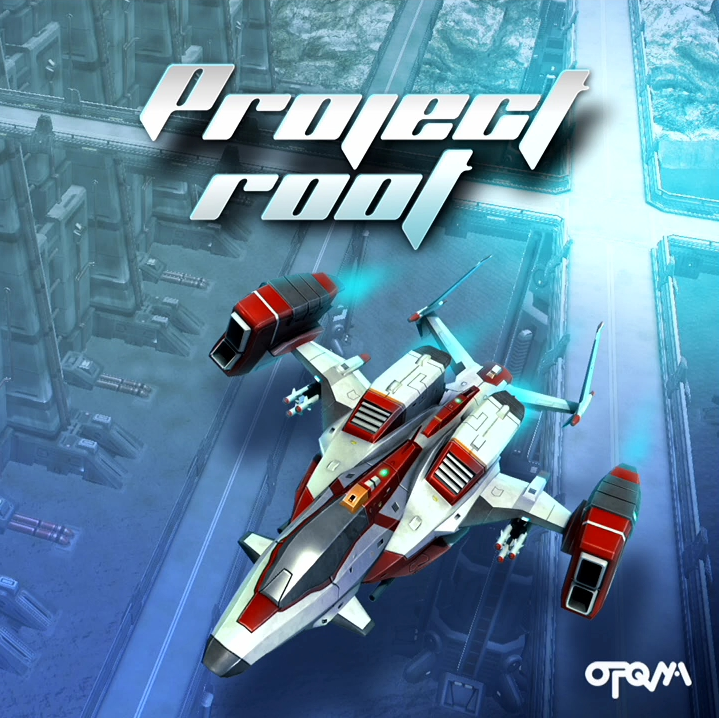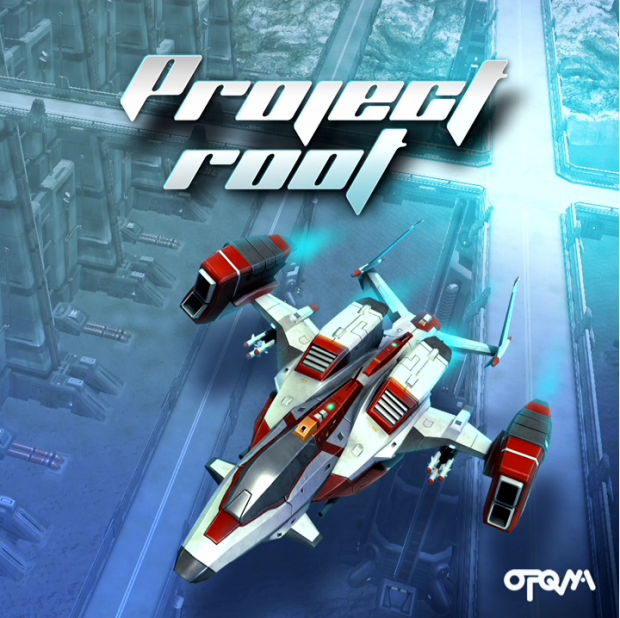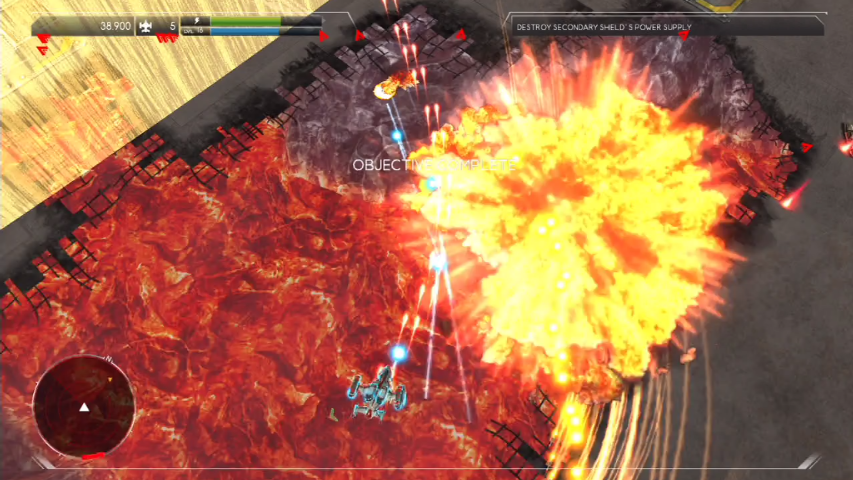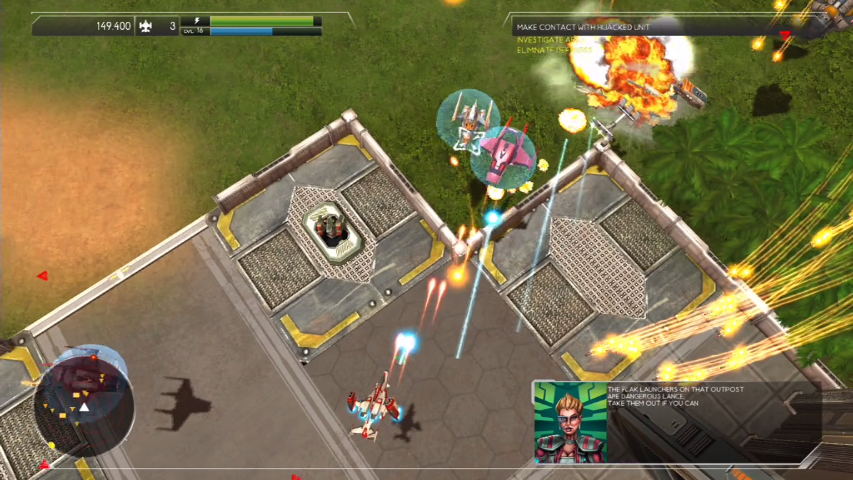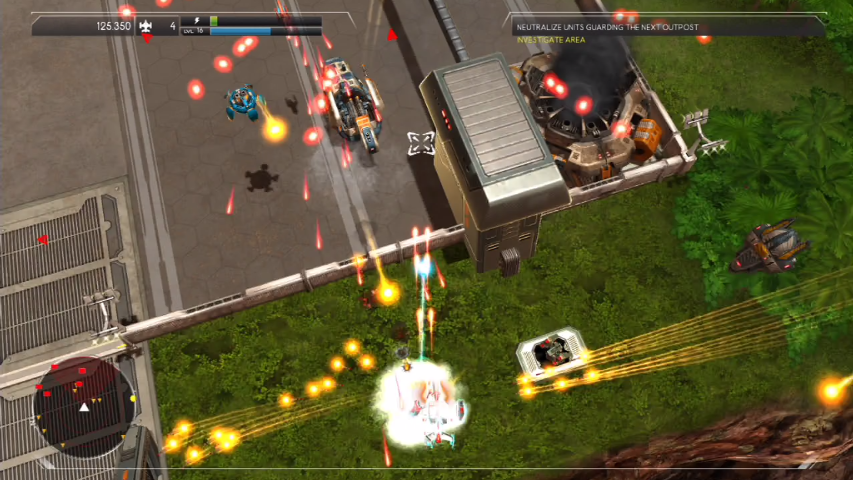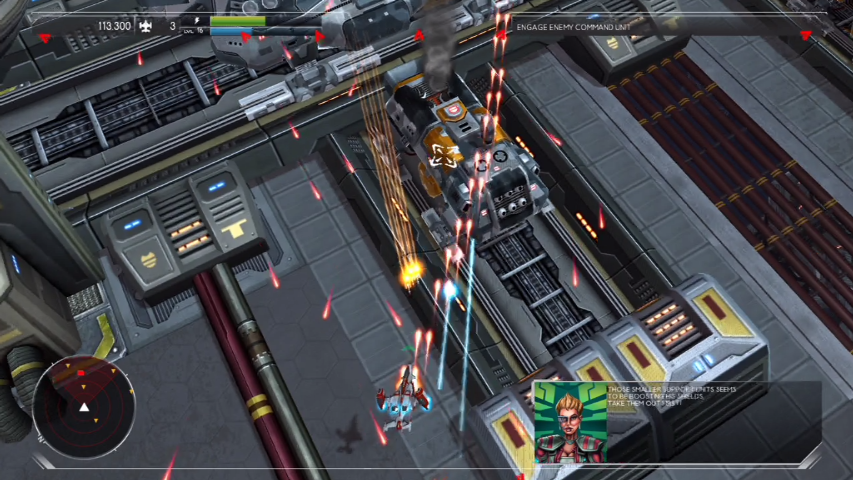Project Root review (Xbox One)
Project Root was developed by OPQAM and published by Reverb Publishing on Xbox One. It will release on April 28, 2015 for $9.99. A copy was provided by Reverb Publishing for review purposes.
Shoot-em-ups are one of my favorite pastimes. There is an odd sense of satisfaction from seeing bullets fly by your ship (or equal equivalent) while shooting your own back and trying to survive. Failure occurs often, there is a thrill in seeing how long you’ll last before dying. In the old days, you’d coin feed an arcade machine until you (eventually) beat it. Nowadays, most shmups have reached niche status and rarely see support in the retail market. For every Deathsmiles or Akai Katana that sees a localization, there is another title like Eschatos and Ginga Force that fans hope lucks out with a region-free Japanese release. Occasionally, we saw XBLA shmup releases such as Triggerheart Exelica and Guwange, which are compact experiences. Project Root is one of the first shmups to reach the Xbox One and try something different: free roaming. As a fan of the genre and sub-genres like bullet hells, I was excited to try it.
Project Root can be fun. It really can be. However, the amount of time and effort to create that opportunity far exceeds the benefit. The game relies heavily on the player upgrading their ship to succeed, yet the experience system to level up for upgrades is atrocious. A majority of your experience will come from a first-time level completion bonus. If you can’t beat a level, you’re in for a miserable time. As is typical for progression systems, the other way to gain XP is to gradually fill the experience bar by killing enemies. The rate of gain, however, is slow, especially on the first few levels where you need it most. It takes one to two hours to level up once via killing enemies, and all of that effort is for a modicum of XP; it may not even be enough for the upgrade you’re pining for. Tack on having zero checkpoints and it becomes a frustrating sortie of trial and error. Adding salt to the wound, upgrades and progress do not carry over to other difficulties, so all of your hard work doesn’t matter if you want to try something harder or cruise through something easier. Outside of free roam, Project Root does nothing new or exciting to add to the genre. I wouldn’t recommend it to anyone outside of the absolute diehard shmup fans that must have every shmup game.
Here’s what I liked:
Grasping for straws — The game is mostly playable, and the Achievements unlock properly. So there’s that. It’s not as bad as some of the worst games found on Steam like Air Control or The Slaughtering Grounds , but Project Root just doesn’t do anything great. Take a look at the screenshots and you’ll understand.
Here’s what I didn’t like:
Music — The music in this game is awful. There are two tracks, and one of them is only played during a stage with a lava background. The main track is a loud and obnoxious tune that loops after 45 seconds and does not fit the tone of the game at all. The other song is a generic, ominous tune. I eventually ended up muting the game. Come on, OPQAM, having only two songs is not good enough for any game let alone a shmup.
Camera view — The player’s ship is way too zoomed in, which serves up a number of problems. One of them is that the enemies try very hard to get to your ship’s side to shoot you, which in itself is fine. The problem is that you have to constantly pivot your ship, as it only shoots forward. Keep your eyes on the ship while constantly pivoting and you’ll be nauseous in no time. The other hitch is that, despite the fact that the viewing angle almost suggests being able to, you can’t see behind your ship. Still, enemies occasionally spawn behind you, leaving you glued to your incredibly small left radar to make sure they don’t sneak up on you. Anyone with motion sickness should probably stay away from this game.
Separate weapon to shoot ground units — The right trigger shoots a straight shot that hits aerial units. Although it’s a bit of a pea shooter even when maxed out, its passable. The left trigger, meanwhile, shoots a mortar-like ground shot that curves down and hits a specific range. The player is incredibly reliant on this weapon, as the final boss and many other dangerous enemies can only be destroyed by using it. It has a short range, no homing capabilities and is slow to hit its target, so any fast-moving enemies will be missed unless you lead the target. It doesn’t even kill quickly, leaving the players to hang around a few seconds to kill one target in a game with many targets at the same time. Since enemy bullets can shred the player in seconds, this weapon is not reliable and puts you in harm’s way. Not exactly what you’d want in a weapon you must use often.
Game text — Take a look at some of the screenshots and you’ll see that the game text is not readable under most circumstances. Maybe the text will be readable on the PS Vita version of this game since it is microscopic here. How am I supposed to read the text while under attack by a lot of ships when I can’t even read the text during peaceful times? Project Root has a story, but you can’t care about it if you can’t even read it.
Objectives — For an objective-based game, there is very little variety. It’s usually a combination of destroy this target(s), reach this location, find this unknown signal (usually a boss fight) or survive an ambush and escort someone. Escorting someone is a joke, as under no circumstances is the target ever in danger — unless you’re out of range, in which case you’ll fail. As a reminder, there are no checkpoints, so you’ll be forced to restart the entire level if you fail the escort. You’re forced to keep close to the escort target to complete the missions, so don’t even think about scouting ahead with no enemies near your target; you’ll still fail. Your basic gameplay is going from point A to point B doing a bunch of tasks you don’t care about. Project Root also features secondary objectives that have no effect on the mission outcome. They offer nothing of value and no bonus XP for completing them. A few of them offer power-ups for completing it, but none of them are worth the effort to complete.
Difficulty curve — Easy mode is unforgiving for an average player. With no checkpoints, dying means starting from the beginning of the level, and most later levels last between 20 and 30 minutes. Your ship is reliant on upgrades to perform decently. A ship that hasn’t been upgraded is barely fast enough to dodge basic bullets and pivots like its stuck in molasses. The ship’s firepower is pretty pathetic from the get-go and is moderately weak maxed out compared to enemy firepower later in the game. The ship even needs upgrades to reach a full life bar to start a level. What kind of design choice is that? If the wrong upgrades are purchased, your experience will be torturous. And that’s assuming you don’t ragequit early.
Glitches — How do you top off a bad experience? By leaving in glitches that should have been eliminated during the testing phase. (Editor’s Note: A day one patch is on its way, but we don’t yet know exactly what it will fix.) Some of the odd things I’ve noticed: enemies clipping into solid boundaries so that you can’t shoot them but they can shoot you; enemies shooting through walls to hit you; and audio glitches. The glitch I disliked most was the fact that players don’t always get the full value of the displayed XP rewarded for leveling up. This shouldn’t be a big deal, but the level cap is 17. Without getting full value of XP, there’s no way to max out your ship’s upgrades. This plays a big part in hard mode where any upgrade can be the difference between success and failure.
Wrap-up:
Sigh. Project Root could have been a lot better. When the player’s ship is fully upgraded, the game is bearable and fun at times. The biggest thing is that, similarly to what Capcom did a few years back with Resident Evil 6 problems, many of these issues could be improved through a patch. Even if the problems are patched over, though, it would likely not affect my score or at most convince me to recommend you try the game. For now, at least, stay far away from this title.
Score: Skip It
Achievement notes: Players have their work cut out for them in this game. Many Achievements are based on progression, but that’s if you can stomach playing through the game. Difficulty Achievements don’t stack, so players will have to play through the entire game at least three times from scratch. Harder difficulties have more enemies and bullets do more damage to the player and hard difficulty was not fun.

